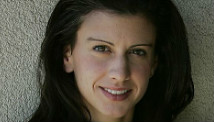CHAMPAIGN, Ill. (AP) — At this rate, no one will want to be No. 1.
Indiana became the fifth straight top-ranked men's college basketball team to lose, falling to unranked Illinois 74-72 on a buzzer-beater by Tyler Griffey on Thursday night.
The senior forward took an inbounds pass with 0.9 seconds to play and made a wide-open layup. And, just like that, the Hoosiers — who moved into the top spot by beating then-No. 1 Michigan just a few days ago — went down.
Indiana coach Tom Crean, whose team has been No. 1 for a total of seven weeks this season after opening there, doesn't know why the top spot is suddenly so hard to hang on to.
"I can't answer that. I'm not sure," Crean said. "I just know that these games are 40-minute games. We played at a high level for most of the game."
The Hoosiers (20-3, 8-2 Big Ten) were in charge until the final 3 1/2 minutes when the Illini (16-8, 3-7 Big Ten) finally put together a run to take and then retake the lead.
"I know this: When we turn the ball over, we're not very good," Crean said. "And the biggest difference tonight was 28 points off turnovers to our 16."
Hoosiers guard Jordan Hulls said flatly that the top rank had nothing to do with Thursday's loss, even for a team that some worried might be looking past unranked, slumping Illinois to a meeting Sunday with No. 10 Ohio State.
"We just didn't execute when we needed to," he said.
If Indiana falls from No. 1 on Monday, No. 2 Florida might not be a candidate to replace the Hoosiers after the Gators' loss this week to Arkansas. That could put No. 3 Michigan back on top if they can make it to Monday without a loss.
For the Hoosiers, nothing could have been worse than the way Thursday's game ended.
With 0.9 seconds, Griffey left defenders Cody Zeller and Christian Watford behind on an inbounds play from the baseline, took the pass from Brandon Paul and delivered the uncontested buzzer-beater.
The shot sent hundreds of students onto the court, though they waited as officials checked the replay to make sure the clock hadn't beaten Griffey. Once the basket was upheld, Paul and fellow guard D.J. Richardson hugged and teared up in relief.
Illinois had endured an awful run since starting 12-0. The Illini had since lost eight of 11 and fallen to 10th in the 12-team Big Ten.
Griffey, who had struggled as bad as any Illini player, seemed surprised at how easily the winning shot came.
"I just made a simple curl cut and left two guys behind me, and Brandon got off a heck of a pass," he said. "Zeller and Watford were both right in front of me and just kind of stayed there."
Crean said the play was a lot like the other breakdowns in the Hoosiers' game that let Illinois climb back from a 12-point halftime deficit.
"We didn't communicate," he said.
Indiana's loss drops them into a three-way tie for first in the Big Ten with Michigan and Michigan State. The win moves the Illini up into a ninth-place tie with Iowa but, more importantly, provides a potential lifeline ahead of a meeting Sunday at No. 18 Minnesota.
"It was good to get back to having that toughness and togetherness and trust that we needed," Illinois coach John Groce said.
Illinois also added a plank to what may be one of the oddest resumes of any team in the country trying to make the NCAA tournament. Illinois has lost to Purdue, Northwestern and twice to Wisconsin. But coming into Thursday night, the Illini had already beaten three teams now in the top 15: No. 6 Gonzaga, No. 10 Ohio State and No. 14 Butler.
Before Thursday, Illinois hadn't beaten a No. 1 team since a win over Wake Forest in 2004.
Richardson had 23 points for Illinois, Paul had 21 and Griffey finished with 14 points and eight rebounds.
Zeller led Indiana with 14 points, while Will Sheehey had 13, Watford 12 and Hulls 11.
Indiana shot 50 percent from the field (25 of 50), 52.9 percent from 3-point range (9 of 17) and 93 percent from the free throw line (13 of 14). The Hoosiers led by an eight- to 10-point margin for most of the second half.
When 6-foot-11 Nnanna Egwu fouled out with just under 5 minutes to play, Indiana appeared in control. Watford made both free throws and, at 69-59, the Illini looked done.
But Richardson went on a one-man run, first burying back-to-back 3-pointers and then hitting a midrange jumper on the run to tie it at 70 with 1:17 to play.
With the clock under 30 seconds and the game tied at 72, Indiana had the ball for what would have been a last shot but Victor Oladipo coughed up the ball. Richardson picked it up and tried a breakaway layup that Oladipo just swatted out of bounds to set up the final play.
Groce credited Richardson for providing a spark.
"I thought he was absolutely terrific on both ends of the floor," Groce said. "He battled, he fought."
Griffey was benched several weeks ago after a blowout loss at Wisconsin. On a team that had lost its shooting touch, the senior forward had especially struggled. And, though one of Illinois' bigger players at 6-9, he wasn't adding much to the inside presence the Illini desperately needed.
Groce said that, even after he benched Griffey, he never gave up on him.
"I just have told him numerous times here I believe in him," the first-year Illinois coach said. "I do."


